Want to increase your Google rankings and keep your readers on your website longer? Creating a content hub is a strategy you shouldn’t ignore. They are not only a way to organize your content scientifically, but also a powerful SEO weapon that helps you dominate the topic. In addition, they also enhance your brand reputation and provide a smooth user experience.
Discover how to create a content hub – from defining the topic, to structuring it, to linking. Let’s start the journey to turn your website into an attractive and powerful content hub on search engines
Key Takeaways
|
1. What Is a Content Hub?
A content hub is a central area on a website that collects and organizes all content related to an overarching topic. All of it is linked to sub-pages that provide in-depth information about the specific topic of the hub.
It includes 2 parts:
- A hub page (also called a pillar), which is the main page that provides an overview of the larger topics.
- Cluster pages, which are individual articles with specific content and are closely linked to the main page.
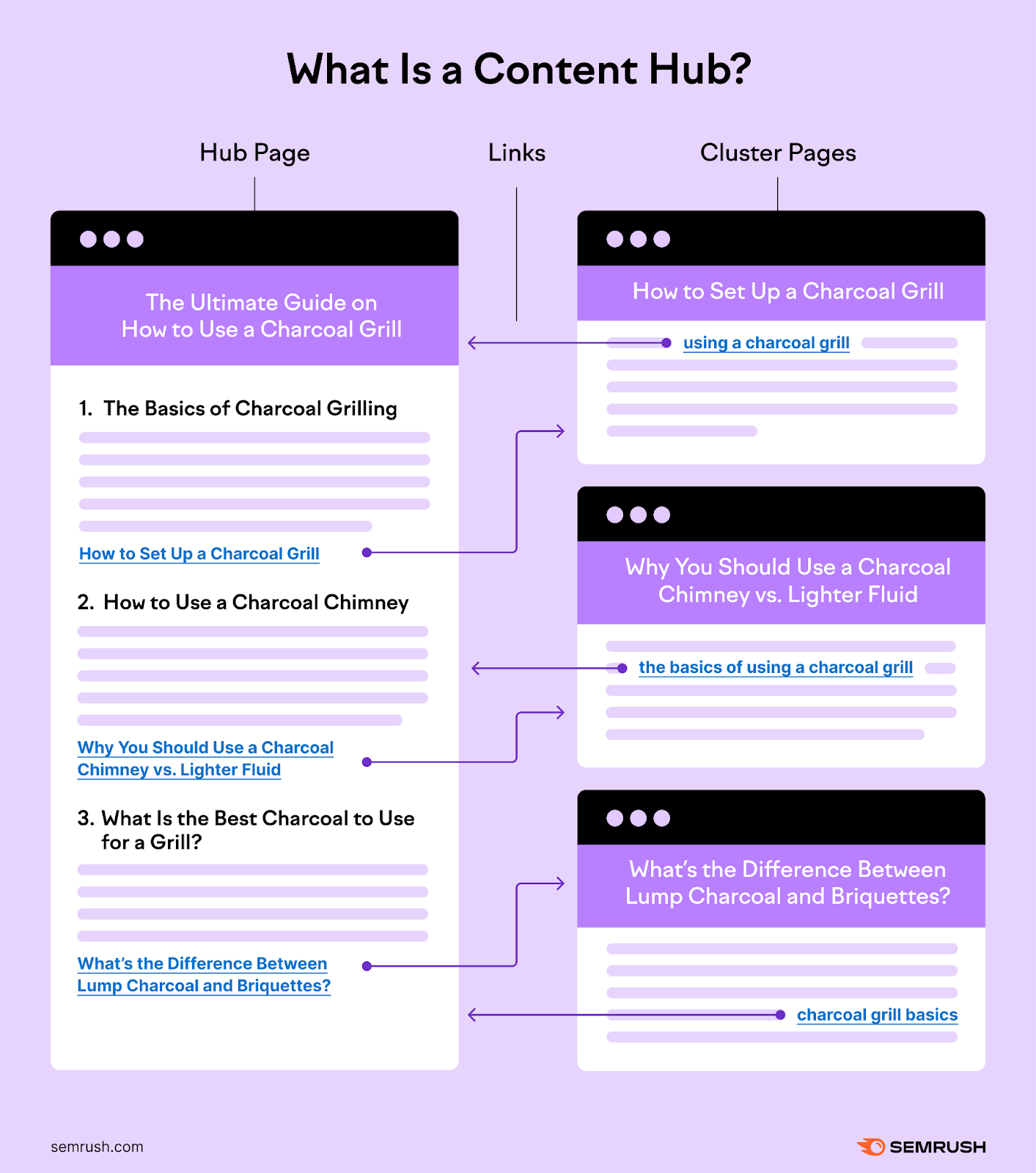
How to create a content hub? (source: SEMrush)
For example, a fitness website might create a content hub around the topic of “weight loss.” The main page would be an overview of how to lose weight effectively. Subpages might include: “Healthy diet plans for weight loss”. “Exercises for beginners”. “Mistakes to avoid when losing weight”
2. Why Are Content Hubs So Important For SEO nowadays?
Brands like SEMrush, HubSpot, and Neil Patel utilize content hubs not only to rank high on Google but also to dominate entire content categories. Here are the reasons why content hubs play a key role in your content marketing strategy:
Improve SEO effectiveness
Content hubs create a link structure between pillar pages and related articles (clusters). They help understand the content structure on the website. They also help collect data more effectively. Especially determine your level of expertise on that topic.
Content hubs help increase rankings for both broad and long-tail keywords. Increase the chance of ranking for competitive keywords over time. They also help improve the authority of the entire domain thanks to a reasonable internal link flow.
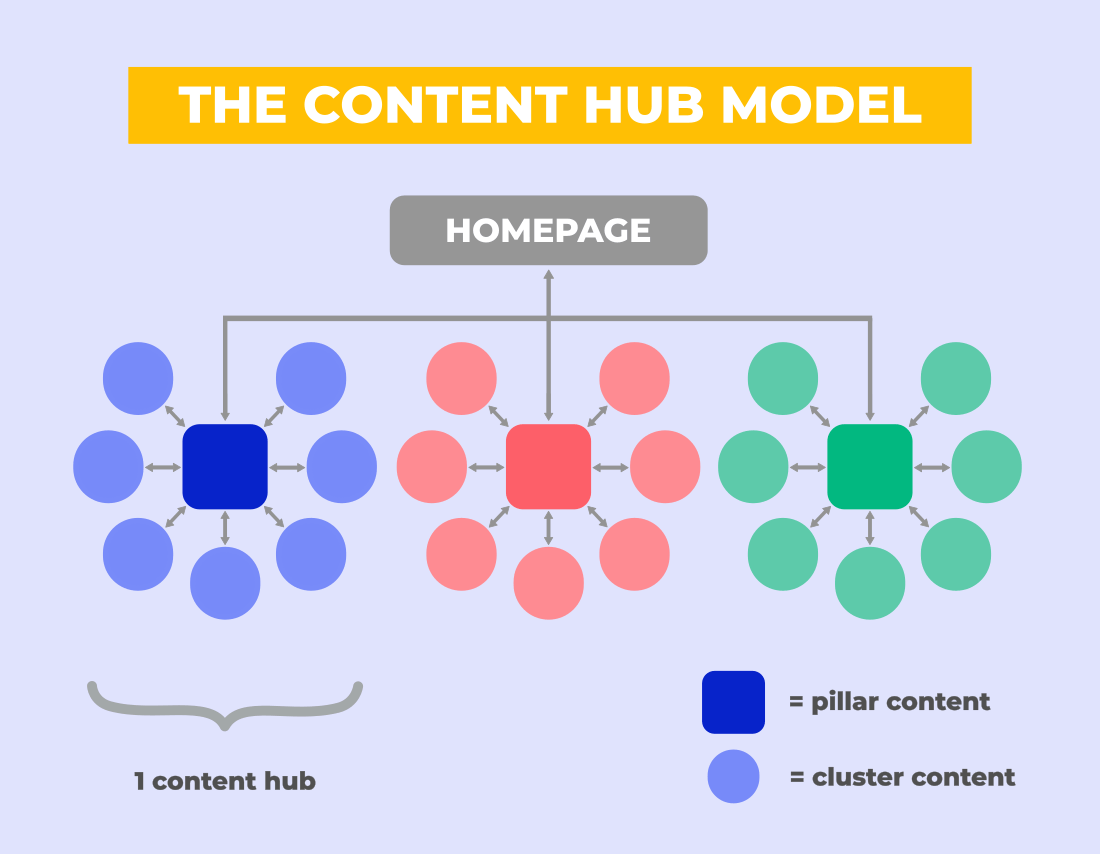
Content hub helps improve SEO efficiency (source: Mangools)
Improve user experience
A well-designed content hub is like a map that attracts customers, instead of confusing readers with separate articles. Content hub helps readers easily find related content. Understand complex topics in an orderly manner and stay on the website longer. Doing this well will help reduce bounce rates.

Content hub helps readers easily find related content
Increase trust and brand reputation
When users see that you cover a topic comprehensively and in depth, they will trust you more. This helps build content authority (topical authority), making your brand a trusted reference in the field
In the long run, it will create a higher brand recall. Not only will it increase the number of shares and quality backlinks, but it will also gain better loyalty from customers.
Increase the ability to rank for difficult keywords
In SEO, highly competitive keywords are often very difficult to climb to the top 10 of Google. Especially if your website is new or does not have much authority (domain authority).
Instead of targeting difficult keywords at first. You should create cluster articles with keywords with long-tail keywords, or keywords with low competition. But these keywords are all suitable for user needs.
When these pages have stable traffic, they will pass SEO value back to the main page (pillar).

Increase your ability to rank for difficult keywords for steady traffic (source: RankWatch)
Makes Content Planning More Effective
A little-known benefit is that when you build a content hub, you can see clearly: What content do you already have? What topics are missing? Or which posts need updating or expanding?
They make planning your content calendar easier and more strategic. Especially when aligning it with a broader content strategy for SaaS.
Specific example: Suppose you are creating a content hub about “Digital Marketing”, after listing the existing articles, you discover:
- Already have: SEO, Google Ads, Email Marketing.
- Missing: TikTok Marketing, Influencer Strategy.
- Need to update: Article about Facebook Ads from 2023.
| 🏷️ Read more: SEO Strategy for SAAS: How to Boost Organic Growth? |
3. Types of Common Content Hubs and How To Build Them
After going through what a content hub is and why it matters, understanding the structure options will help you choose the best format when planning how to create a content hub. Here are the 3 main types of content hubs you’ll need to keep in mind:
1. Hub and Spoke Model
The Hub and Spoke model is a popular content organization structure in content marketing. The Hub model is a main page that focuses on general articles, covering the entire large topic. And the Spokes are more detailed articles, delving into specific aspects of that topic.
The spoke pages are all directly linked from the hub page and vice versa, forming a tight content network. They help Google understand the connection between the content on the page.
For example, The IGN website uses this model for the game section, The Sims 4:
- Hub: A general page that provides comprehensive information about the game (character creation guide, how to build a house, basic gameplay …).
- Spoke: Each small section will lead to a detailed page, such as: Build Mode Guide, How to play the game in detail by section
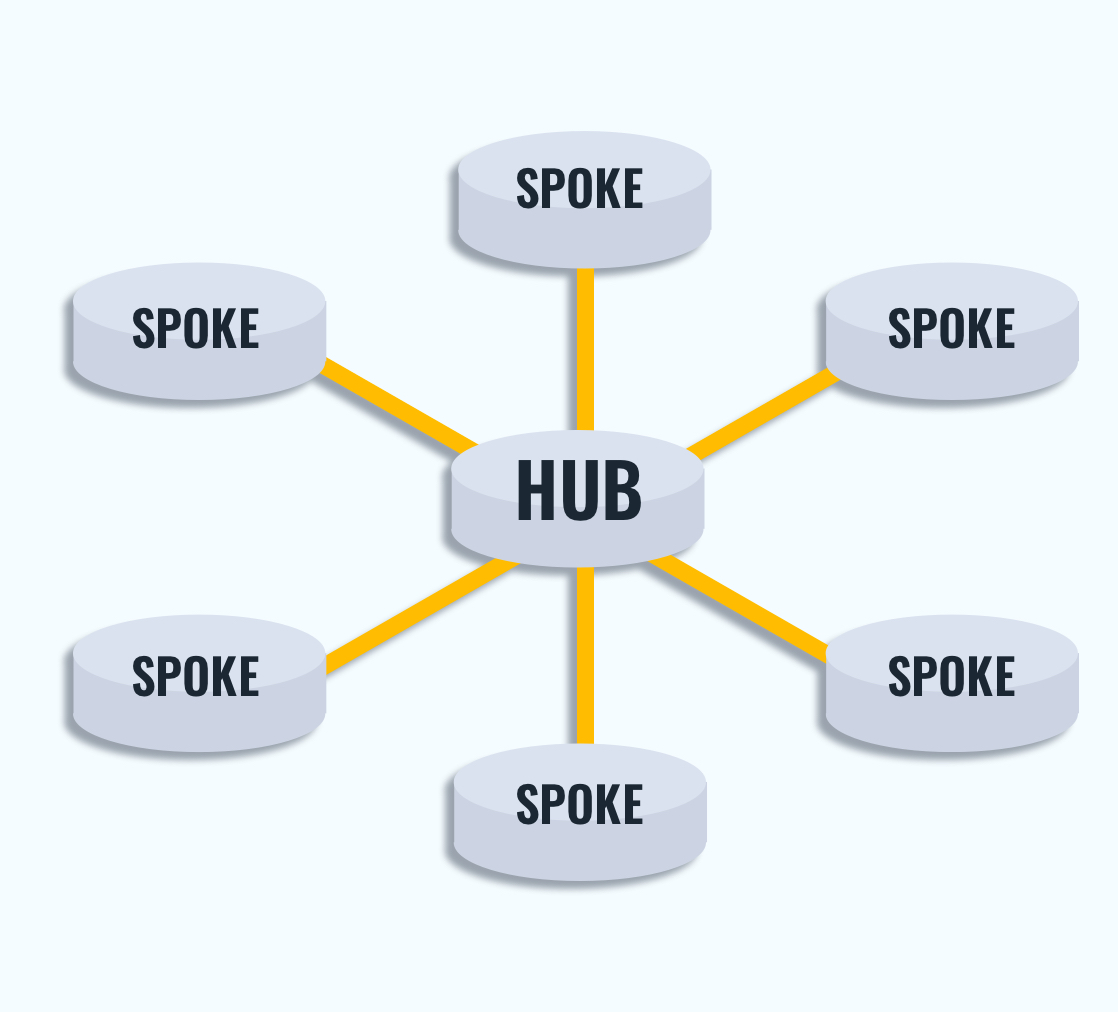
The Hub and Spoke Model is a popular content organization structure in content marketing
2. Topic Gateway
Topic Gateway is a type of content hub that works like a landing page. They focus all the content around a big topic.
Instead of just providing general content like a pillar page. Topic Gateway acts as an information transfer station, connecting all internal and external resources related to the topic. Topic Gateway is considered a content aggregation platform.
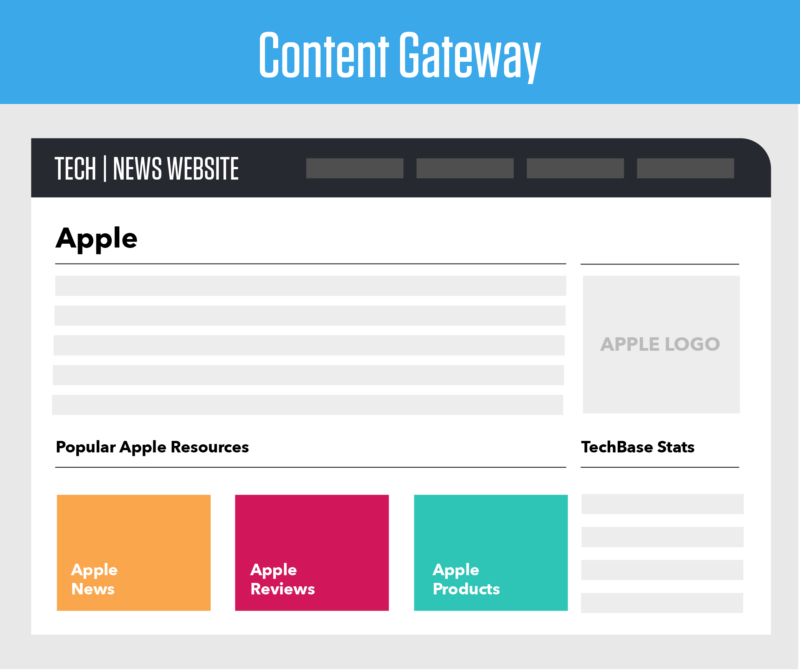
Topic Gateway is a type of content hub that works like a landing page (source: Stratabeat)
Example: A “Complete Guide to Artificial Intelligence” page on a tech blog could be a topic gateway, where readers can access:
- Introductory AI articles
- Guide to learning Machine Learning
- A roundup of popular AI tools
- Links to in-depth research papers or related courses
3. Content Library
Content Library is a type of content hub, like a digital content archive on the website. It contains all resources such as blog posts, ebooks, videos, infographics, and research reports. And the main pillar page is still mainly used to find more specific content.
Usually the Content Library is arranged by topic, content format, or publication time. They are all classified in separate folders and are easy to search.
Use case: For example, HubSpot has an incredibly rich content library as part of building a knowledge base. Where users can browse and download hundreds of ebooks, templates, video tutorials, and free marketing, sales, and CRM tools.
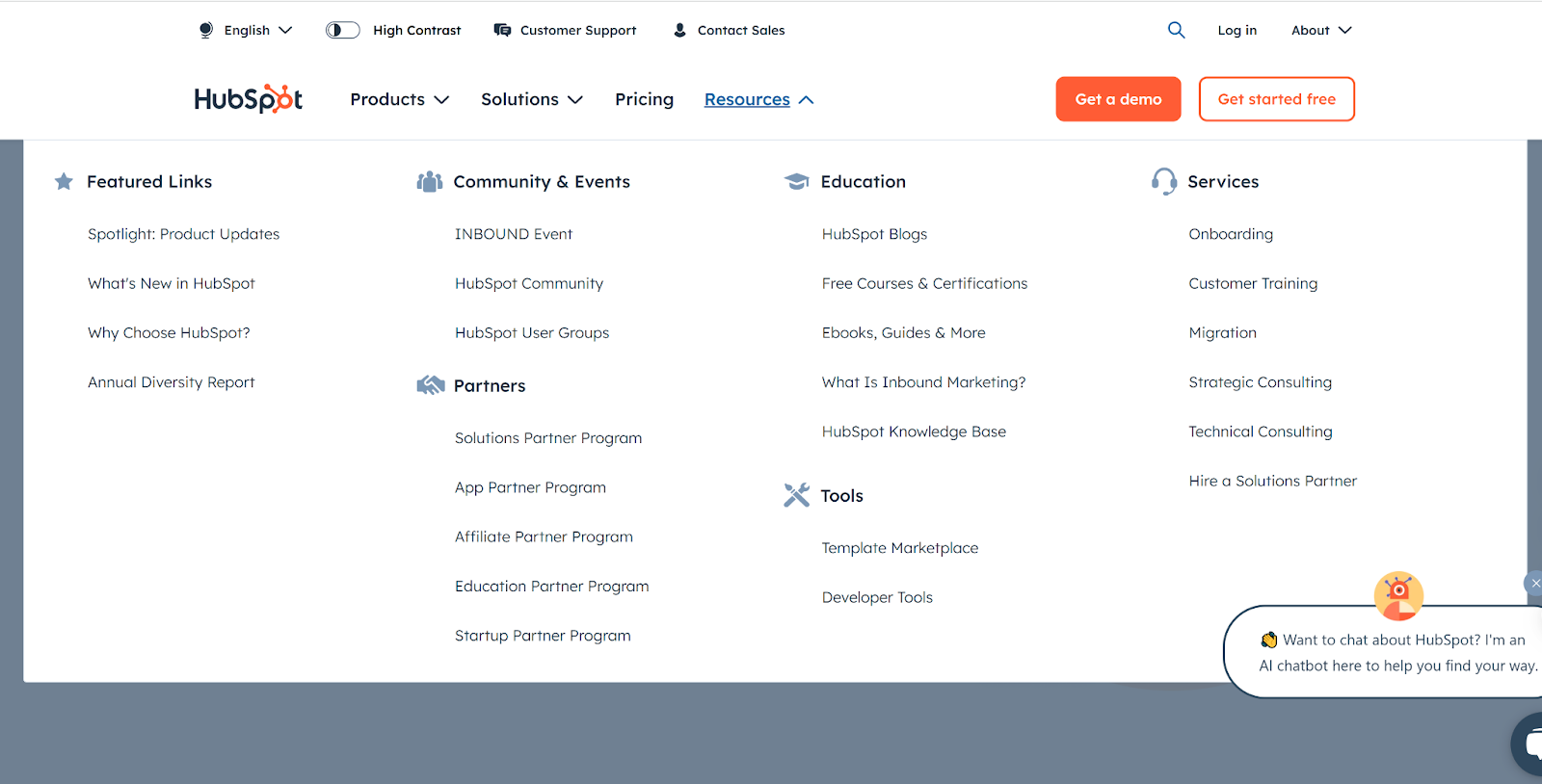
A content library is a type of content hub, like a digital content repository, and building a knowledge base on
| 🏷️ Read more: What Is Saas Marketing Funnels? Detailed Guide To Build A Successful Plan (2024) |
4. How to Create a Content Hub: Step by Step Guide
Now that we understand what content hubs are and why they matter, let’s break down the steps to build your own.
4.1 Identify Your Primary Topic
Start by choosing a broad topic that is closely related to your product/service and your audience’s needs. Brainstorm a list of topics that are relevant to your business. But also interesting to potential customers.
Those topics must be topics on which you have enough knowledge and experience to provide information on. Then, use a keyword research tool like Keyword Magic Tool to find suitable primary keywords. It should have an informational purpose, find keywords with stable search volume, and have reasonable competition.

Identify the main topic that is closely related to your product/service through the keyword magic tool (Ahrefs)
If you are in the women’s fashion business, instead of choosing “women’s fashion,” which is too broad. You can focus on “how to coordinate summer outfits for women”. A topic broad enough to develop a hub.
4.2 Research Related Subtopics and Keywords
To make your hub comprehensive, identify relevant subtopics that users are searching for. Once you have chosen your main topic, find subtopics around it to build clusters and expand your content.
Use a tool like Keyword Strategy Builder to find long-tail queries and questions. The step is crucial in content curation techniques.
For example, with the main topic of “how to coordinate summer outfits for women”, you can find subtopics such as:
- Coordinating outfits with tank tops
- What to wear to the beach to stay cool and beautiful?
- How to mix clothes with short skirts
- Indispensable summer accessories
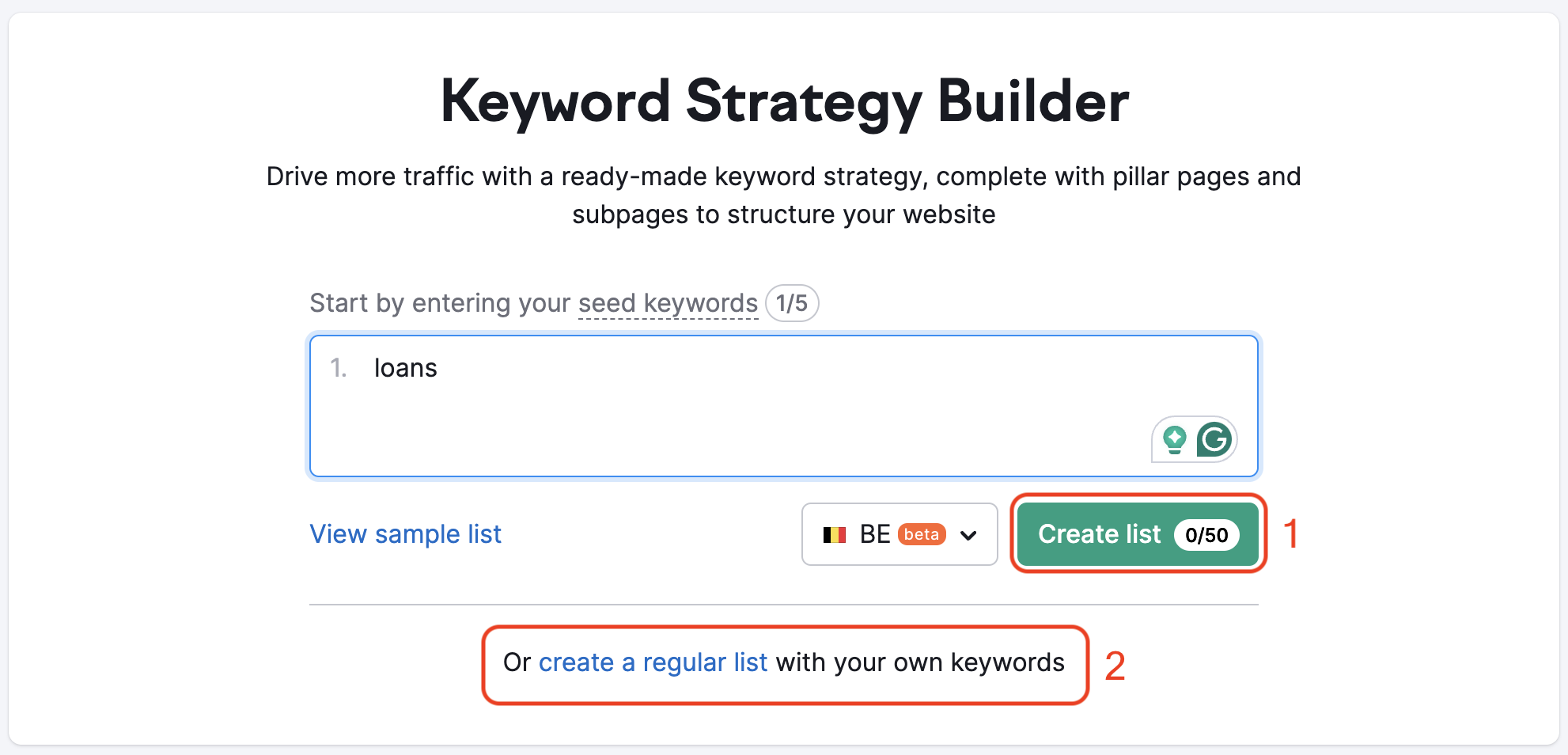
Choose a main topic and find subtopics around it to build clusters and expand your content (source: Ahrefs)
4.3 Plan Your Content Structure
Before you start writing, you need to define a clear content structure to ensure your content hub. Start by identifying your main topic (pillar content) and mapping out related topics (cluster content).
Arrange them in a hierarchical layout, with the pillar page at the center and each cluster article exploring a specific aspect of the main topic. You can use tools like a content map or mind map to visualize the connections between topics.
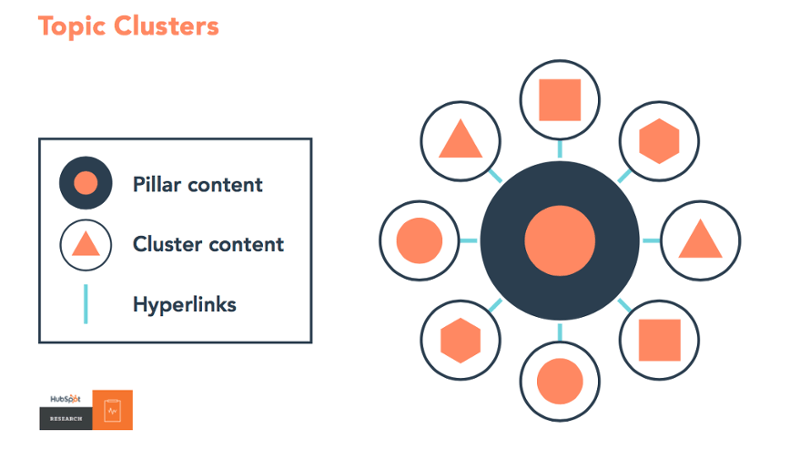
Plan your content structure to ensure your content hub is easy to navigate and well-organized
With the main topic being “Digital Marketing”, you define the pillar as “Digital Marketing Guide for Beginners”. And the clusters include: SEO, Google Ads, Content Marketing on social media, and Email Marketing.
4.4 Audit Existing Content
Review existing content assets to leverage or improve. Scan your website for articles, blogs, guides, or videos that cover a portion of the topic in your content hub.
Evaluate their performance using tools like Semrush (Organic Research) or Google Analytics. Pay attention to traffic, engagement, and keyword rankings.
If some content already ranks well but needs updating, prioritize editing rather than rewriting from scratch. It saves time, resources, and maintains SEO momentum. Prioritize refreshing potential pages with updated data, better structure, or optimized internal linking. Learn more on How To Do An SEO Audit Right Here.
4.5 Create Pillar (Hub) Content
Pillar content acts as a core resource, covering a broad and in-depth topic. Pillar Content pages should answer important questions. In addition, they should also provide a detailed analysis.
Aim for long-form content, typically 2,000 words or more. Include definitions, practical examples, helpful tips, application scenarios, and supporting images or graphics.
Optimize the page for the primary keyword naturally throughout the article, aiming for 8–10 mentions. Use clear headings (H2, H3) for easy navigation. The content should include bullet lists and internal links to cluster articles.
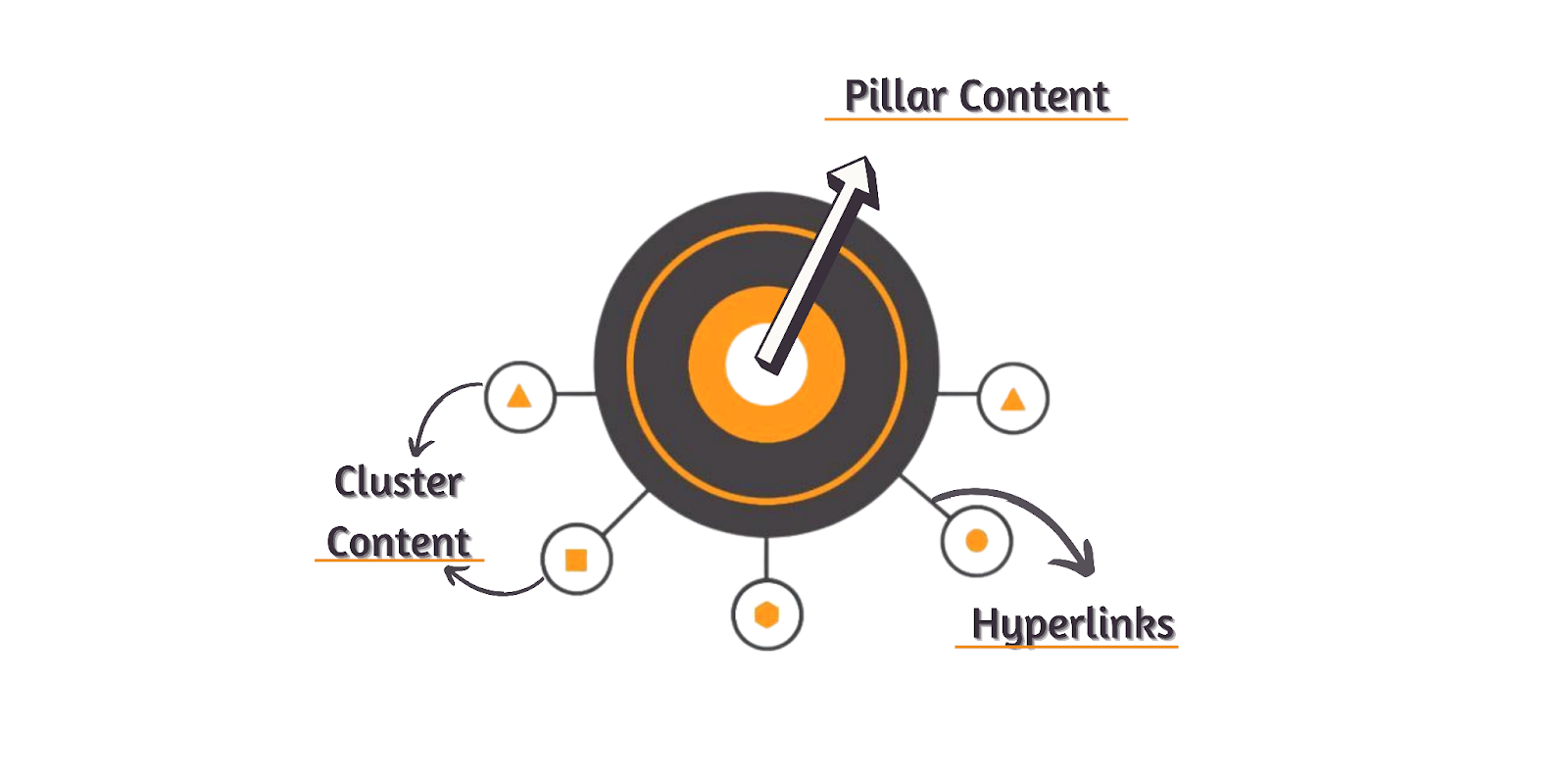
Plan Your Content Structure to ensure your content hub is easy to navigate and well-organized (source: Outreach Monks)
4.6 Develop Cluster (Supporting) Content
Cluster content complements the pillar by going into more detail. Each article should target a long-tail keyword related to the main topic and link back to the pillar page.
Make sure each cluster article has value on its own, but also contributes to the overall story of the content hub.
Cross-link between related cluster articles and create a useful content network, keeping users on the page longer. It also increases topic relevance for SEO.
Examples: For a hub on “Remote Work,” your cluster content might include: How to Stay Productive While Working from Home, or Creating a Remote Onboarding Process.
4.7 Implement Internal Linking Strategy
A smart internal linking structure is key to improving both user experience and SEO performance. Internal linking passes authority and helps users navigate easily. Also, enhancing both SEO for content hubs and time on site.
In addition, establish links between related cluster posts to support each other. They will help improve search engine crawlability and keep users on the website longer.
Use descriptive anchor text to avoid orphaned pages. Remember to check regularly to fix broken or outdated links.
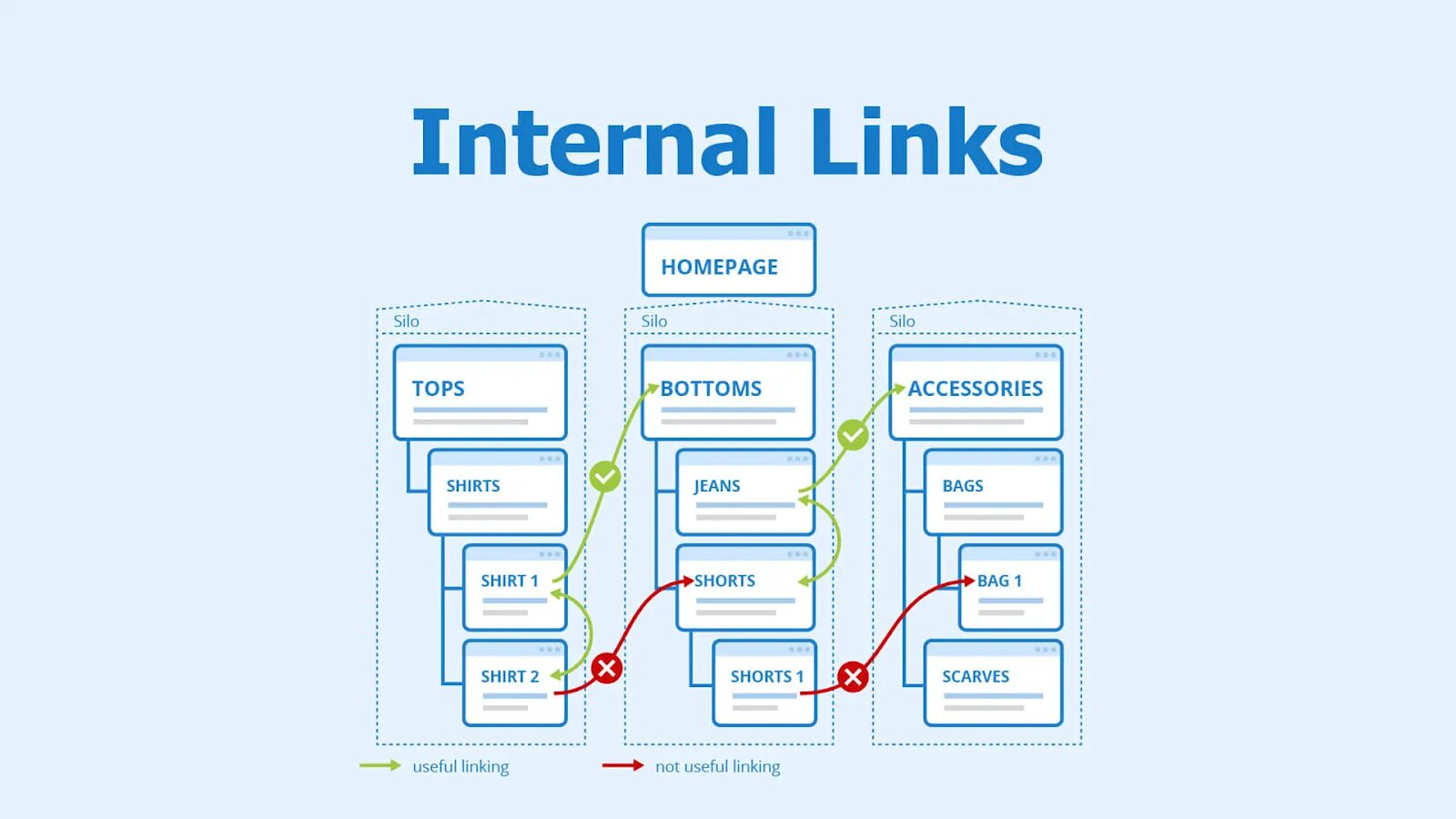
A smart internal linking structure is key to improving both user experience (source: SiteCentre)
4.8 Publish and Organize Your Content Hub
A clean, accessible layout contributes significantly to user experience and time spent on the page.
Once you have completed your pillar and cluster content, you need to publish it in an easy-to-follow, easy-to-navigate layout. Create a dedicated hub page that clearly shows the relationship between the pillars and clusters.
You can present this structure using a table of contents, a tile grid, or a card layout. Group posts by topic or customer journey stage. And use friendly URLs and breadcrumbs to increase usability.
5. Best Practices for Content Hubs
When learning how to create a content hub, it’s important to follow best practices. Both to ensure long-term effectiveness and maximum value. Here are the key principles:
1. Update content regularly:
To keep your content hub fresh and engaging, you should plan to update your cluster posts and pillar posts regularly. Review your posts every 3-6 months to add new data, industry trends, or changes in SEO algorithms.
Also, add new cluster posts as relevant topics emerge or your audience’s needs change. If you have a Digital Marketing hub, you can update your pillar posts with the latest TikTok advertising trends. Or edit your SEO cluster posts to reflect Google’s 2025 algorithm.

When learning how to create a content hub, it is important to remember to update your content regularly (source: Designitic)
Not only will this help maintain your search rankings, but it will also build trust with your readers by providing fresh content.
2. Maintain consistency
Consistency in writing style and presentation helps your content hub look more professional and recognizable. You should establish a set of standards for tone, font, heading size, and use of images for your entire content system.
For example, all articles in a health hub can use a friendly tone. Use Arial font, green headings, and icon illustrations to create a sense of uniformity.
3. Prioritize user experience
User experience should be a top priority when building a content hub. The article should have a clear layout, a table of contents, or a list of cluster articles right on the pillar page for readers to easily search.
Articles should have clear titles, short paragraphs, and bullet points to help readers quickly grasp information. Optimize page loading speed by reducing image size to keep customers on the site longer.
At the same time, ensure a responsive interface that is friendly to all devices, especially phones.

User experience should be a top priority when building a content hub
For example, a recipe hub can have a clear table of contents, concise step-by-step instructions, and images optimized for fast loading on phones.
6. How to Measure Content Hub Performance
Once your hub is live, it’s essential to track key performance indicators (KPIs) to evaluate effectiveness.
Important KPIs include:
- Organic traffic: Number of visits coming from unpaid search. Consistent monthly growth of 10–20%. The specific goal depends on the industry and competition. But you should see a steady upward trend over time.
- Time-on-page: This is the time users spend on each page, which is about 2–4 minutes or more. The ideal time shows that users are actually reading and interacting with the content.
- Bounce rate: This rate is good if it is below 50%; the ideal is around 30–45%. A high bounce rate can indicate that the content is not engaging or does not match the search intent.
- CTR: A high CTR of internal links shows an attractive link structure and effective navigation.
- SEO Metrics: Track the number of keywords in the top 3 / top 10. Increase high-quality backlinks pointing to the hub/pillar page. No crawl errors or unindexed pages.
Use Google Analytics, Ahrefs, or Semrush to monitor these metrics. For deeper analysis, use heat maps (e.g., Hotjar) to understand user behavior on the hub.
Conclusion:
Learning how to create a content hub is a game-changer for brands aiming to scale organic traffic and improve content discoverability. By strategically grouping related content, you build topical authority, enhance user experience, and future-proof your SEO efforts.
Whether you’re starting from scratch or improving an existing site, implementing a content hub is a smart move. It transforms scattered articles into a well-organized resource center—exactly what both search engines and users crave.
Need expert help building your content hub strategy? Explore our SEO Content Services at Golden Owl Digital to create high-performing hubs that boost visibility, engagement, and conversions.







